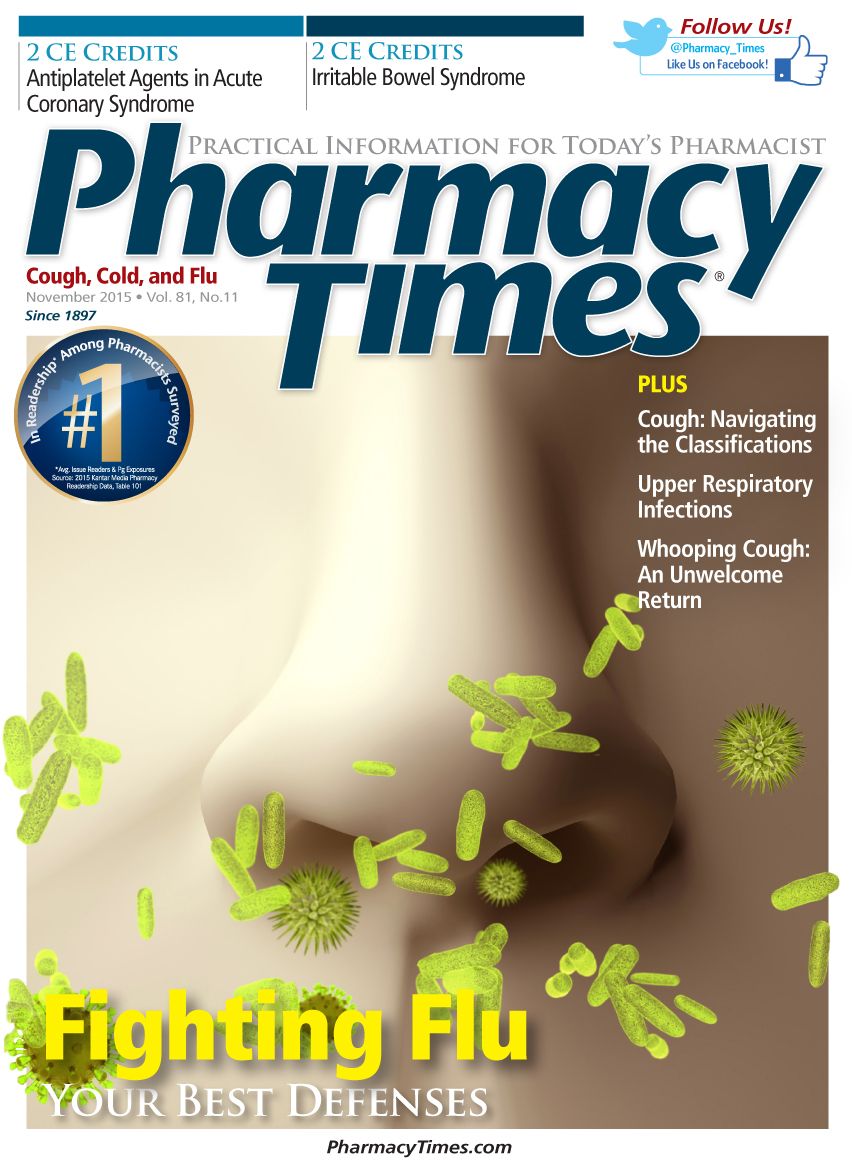Publication
Article
Pharmacy Times
Absolute Versus Relative Risk
The results of a recent study suggest that there is a modest increase in the risk of intracranial hemorrhage when NSAIDs are combined with antidepressants compared with antidepressants alone.
A recently published epidemiologic study assessed the risk of intracranial hemorrhage in individuals receiving antidepressants with and without concurrent nonsteroidal antiinflammatory drug (NSAID) therapy.1 It was a huge study involving more than 4 million individuals, and the authors corrected for potentially confounding factors such as age, gender, comorbidities, and other medications. The results suggested there is a modest increase in the risk of intracranial hemorrhage when NSAIDs are combined with antidepressants compared with antidepressants alone.
This raises the issue of whether a study such as this should result in action on the part of pharmacists. One of the first questions to ask in assessing the clinical importance of such findings is “What is the magnitude of the increased risk?”— but that can get tricky. Hypothetically, suppose a credible epidemiologic study finds that combining Drug A and Drug B doubles the risk of, say, cataracts of the eye, but neither drug alone seems to increase cataracts over the normal background rate. This sounds bad because the relative risk of cataracts is increased by 100%.
Then suppose you look at the absolute risk, and you see that the risk of cataracts went from 1 in 1000 cases to 2 in 1000 cases. Even if an individual takes Drug A and Drug B together, the risk of cataracts is still only 0.2%. Therefore, if both drugs are truly necessary for a patient, it may well be worth administering the combination given the very small absolute risk. If, however, either of the drugs is of marginal value to the patient or if there is a suitable alternative to either drug that does not interact, one might consider stopping one of the drugs or using an alternative. This would all have to be assessed on a case-by-case basis, considering all of the benefits and risks.
Now let us go back to the recent study results that show antidepressants and NSAIDs increase the risk of intracranial hemorrhage. Although the hemorrhage rate (adjusted for confounding factors) was 60% higher in individuals who received antidepressants plus NSAIDs than in those who received antidepressants alone, the absolute risk was still a fraction of 1%. Given the potential life-threatening severity of an intracranial hemorrhage, one cannot ignore these results. It is, however, also important to keep the absolute values in mind when deciding whether the risk is worth the potential benefit of using both drugs.
Sometimes it helps to look at a subgroup analysis of the data to make a decision for a specific patient. In this study, the risk was not statistically different when comparing individuals older than 45 years with those younger than 45 years, but men had a significantly larger increase in risk of hemorrhage with the combination of drugs than did women. Accordingly, one might be more likely to act on this interaction if the patient is a man.
Another factor to consider is whether there is a plausible biological explanation for an interaction. Although selective serotonin reuptake inhibitors (SSRIs) may impair platelet function due to reduced platelet uptake of serotonin, this study found no difference in the increased risk of bleeding when NSAIDs were combined with SSRIs versus tricyclic antidepressants, most of which have much less effect on serotonin uptake than SSRIs. Theoretically, one would have expected a difference.
One would also look at any other studies that addressed the same drug interaction. In this case, a previous study looking at SSRIs and intracranial hemorrhage found only a “trend” (not statistically significant) suggesting that the combined use of SSRIs and NSAIDs increased the risk.2 Considering the 2 studies together, it is clear that more data are needed to establish the degree of risk.
Summary
Epidemiologic studies suggest there may be a small increase in the risk of intracranial hemorrhage when combining antidepressants and NSAIDs—more so in men than in women. The current data, however, suggest an absolute risk of substantially less than 1%. Both the low absolute risk and the limited amount of data available on the interaction should be considered before deciding to take action in any given patient. It is also hoped that these factors would be considered before this interaction is added to computerized drug interaction alerting systems.
Drs. Horn and Hansten are both professors of pharmacy at the University of Washington School of Pharmacy. For an electronic version of this article, including references, if any, visit www.hanstenandhorn.com.
References
- Shin JY, Park MJ, Lee SH, et al. Risk of intracranial haemorrhage in antidepressant users with concurrent use of non-steroidal anti-inflammatory drugs: nationwide propensity score matched study. BMJ. 2015;351:h3517. doi: 10.1136/bmj.h3517.
- Bak S, Tsiropoulos I, Kjaersgaard JO, et al. Selective serotonin reuptake inhibitors and the risk of stroke. a population-based case-control study. Stroke. 2002;33:1465-1473.







